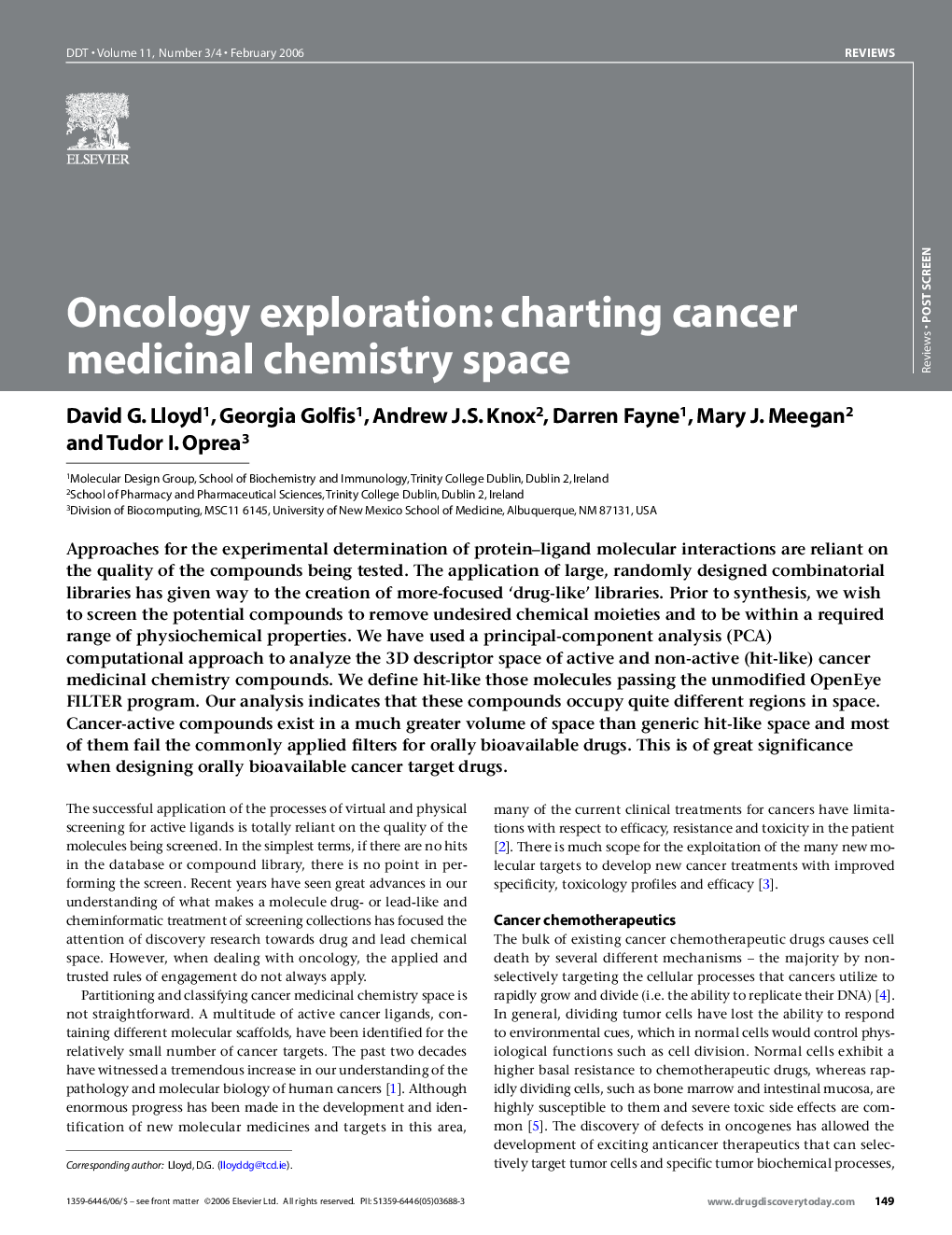| Article ID | Journal | Published Year | Pages | File Type |
|---|---|---|---|---|
| 2081423 | Drug Discovery Today | 2006 | 11 Pages |
Approaches for the experimental determination of protein–ligand molecular interactions are reliant on the quality of the compounds being tested. The application of large, randomly designed combinatorial libraries has given way to the creation of more-focused ‘drug-like’ libraries. Prior to synthesis, we wish to screen the potential compounds to remove undesired chemical moieties and to be within a required range of physiochemical properties. We have used a principal-component analysis (PCA) computational approach to analyze the 3D descriptor space of active and non-active (hit-like) cancer medicinal chemistry compounds. We define hit-like those molecules passing the unmodified OpenEye FILTER program. Our analysis indicates that these compounds occupy quite different regions in space. Cancer-active compounds exist in a much greater volume of space than generic hit-like space and most of them fail the commonly applied filters for orally bioavailable drugs. This is of great significance when designing orally bioavailable cancer target drugs.
